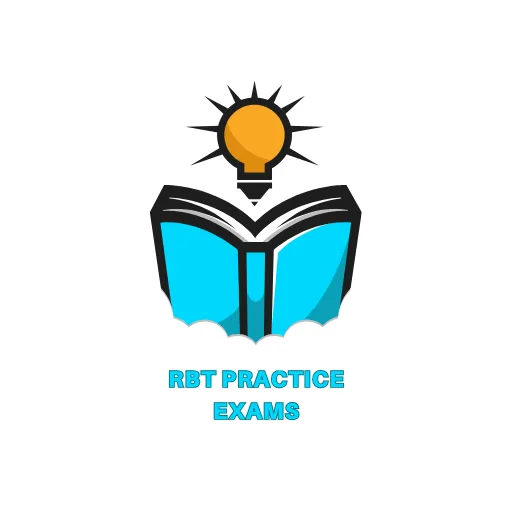RBT Study Guide – Unit D: Behavior Reduction
Welcome to Unit D of our RBT Exam Study Guide, focused on the essential topic of behavior reduction. This section corresponds to Section D of the RBT Task List and includes key skills that every Registered Behavior Technician (RBT) must demonstrate when working with challenging behaviors.
Visit for RBT Practice Exam
The Importance of Behavior Reduction in ABA
In the context of Applied Behavior Analysis (ABA), behavior reduction plays a critical role. Many individuals receiving ABA services engage in behaviors that may be harmful, disruptive, or interfere with learning and social development. The goal of behavior reduction is not to suppress behavior arbitrarily, but to understand its function and replace it with more appropriate alternatives.
It’s important to note:
- Not all individuals, including those with autism, exhibit maladaptive behaviors.
- ABA strategies can be applied to a wide range of individuals, including neurotypical learners.
D-1: Key Elements of a Behavior Reduction Plan
Every client with interfering behaviors should have a Behavior Intervention Plan (BIP), developed by a Board Certified Behavior Analyst (BCBA) and implemented by RBTs and caregivers. A solid BIP includes:
Components of a Behavior Reduction Plan:
- Target behaviors: Clearly defined using operational definitions.
- Responsible parties: Identifies who will implement the strategies (e.g., RBTs, parents).
- Behavior function: Understanding why the behavior occurs.
- Antecedent strategies: Preventative measures to reduce behavior likelihood.
- Consequence strategies: Guidelines on how to respond when behaviors occur.
- Crisis interventions: Specific steps to handle dangerous or emergency behaviors.
Tip: If a new behavior arises that isn’t yet in the plan, collect ABC (Antecedent-Behavior-Consequence) data and inform your BCBA promptly.
D-2: Understanding the Functions of Behavior
In ABA, every behavior serves a function, meaning it helps the individual achieve something. Identifying these functions is crucial to effective behavior reduction.
The Four Functions of Behavior:
- Attention: To gain social interaction or recognition.
- Escape/Avoidance: To get away from undesirable tasks or situations.
- Access to Tangibles: To obtain objects or activities.
- Automatic Reinforcement: Because it feels good (self-stimulatory behaviors).
Understanding the function behind a behavior allows practitioners to develop interventions that meet the same need through appropriate behaviors.
D-3: Using Antecedent Modifications
An antecedent is what happens right before a behavior. By changing antecedents, we can reduce the likelihood of undesired behaviors occurring.
Common Antecedent Strategies:
- Visual schedules
- Priming (pre-teaching expectations)
- Offering choices
- High-probability request sequences
- Non-contingent reinforcement (NCR)
- Timers and transition cues
Motivating Operations (MOs):
- Establishing Operations (EOs): Increase the value of a reinforcer due to deprivation.
- Abolishing Operations (AOs): Decrease the value due to satiation.
Discriminative Stimulus (SD):
An SD signals that reinforcement is available. For instance, a restroom sign is an SD for using the bathroom it tells you reinforcement (relief) is possible.
D-4: Implementing Differential Reinforcement
Differential reinforcement involves reinforcing desired behaviors while placing undesired behaviors on extinction.
Two Common Types:
Differential Reinforcement of Other Behavior (DRO):
- Reinforce any behavior other than the target one.
- Example: Reinforce a child every 5 minutes they go without screaming.
Differential Reinforcement of Alternative Behavior (DRA):
- Reinforce a specific appropriate behavior that serves the same function as the maladaptive one.
- Example: Instead of hitting for attention, the child is reinforced for saying “Look at me!”
The goal: Increase adaptive behaviors while decreasing interfering ones.
D-5: Applying Extinction Procedures
Extinction involves withholding reinforcement for a behavior that was previously reinforced.
Key Points:
- Extinction is not punishment.
- It must be based on how the behavior was previously reinforced.
- When extinction is used, the behavior may initially get worse before it improves—this is known as an extinction burst.
Examples:
- If a child screams for candy and is no longer given candy after screaming, the behavior is on tangible extinction.
- If a child seeks attention through yelling, and the behavior is ignored, this is attention extinction.
Important: Extinction is most effective when combined with teaching and reinforcing replacement behaviors.
D-6: Crisis and Emergency Procedures
A crisis plan is a critical part of a behavior reduction strategy for clients who may pose a risk to themselves or others. Not every client will need one, but for those who do, the plan must be:
- Clear and individualized
- Include specific emergency protocols
- Cover both behavioral and medical crises
Examples of When Crisis Plans Are Needed:
- Elopement (running away)
- Severe aggression or self-injury
- Medical issues like asthma or seizures
Final Thoughts
Behavior reduction in ABA is not about controlling behavior—it’s about understanding why a behavior occurs and teaching more effective, appropriate ways for individuals to get their needs met. RBTs play a vital role in implementing behavior plans, using data-driven decisions, and ensuring the safety and success of their clients.
